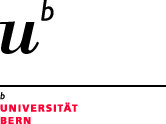In one of the new projects, we are investigating the needs and requirements of the main educational stakeholders in digital education and how these can be optimally coordinated. In the other project, we will analyse how teaching provision of demanding duties can reduce stress if students are specifically prepared for such tasks.
In teaching, although not always acknowledged, such research should, on the one hand set the direction, and on the other scientifically assess progress. Accompanying research assesses innovations and new trends for effectiveness and makes practical teaching sustainable. In this way the necessary evidence is also produced so that resources are allicated for innovative teaching in a meaningful way. Teaching must be based on solid research and objective knowledge, because only then can it also be described as good. In medicine, in particular, where everday clinical practice is sine qua non evidence-based, evidence-based teaching should not be as difficult to value as it sometimes is. Maybe this is due to the complexity of the implementation field? In medicine, in addition to traditional knowledge acquisition and the associated optimal teaching, a large number of practical and social skills must also be acquired. The bridge between theory and practice must function in a complex system between basic teaching and teaching in everyday clinical practice. That is and will remain challenging! It seems that the evidence concerning teaching effectiveness not always reach the educators. Or is there insufficient time for the individual teachers to deal with new teaching formats or a lack of support? It is a goal of our educational research to generate implementable needs-oriented and practically feasible innovations. How do we implement these high goals in the two new projects?
The pandemic has shown the importance of good digital teaching. Many digital solutions have weaknesses, and the needs of teachers and students are often neglected. The project focuses on digital learning and teaching and investigates how necessary developments can be implemented. It is exemplarily anchored in medical teaching, but is relevant for university education generally.
We aim to better understand current needs and to investigate targeted solutions.
- In the first part of the study, we examine academic teaching as an interaction between the organisation, teachers and students. Good digital teaching is only possible when these three parties are optimally coordinated. We want to better understand the needs as well as the conducive and detrimental factors.
- In the second part of the study, we ask how a feeling of closeness and communication are experienced when conversations are conducted over video? In medicine, and wherever practical teaching is important, the pandemic has had a particular impact. For example, communication training is essential to practice good communication with patients, when such training runs online, we need to know under which condition it can be effective.
- The third sub-study focuses on the needs of the students: How can they be supported to learn independently and effectively? If there is an absence of spontaneous contact between students and teachers, students suffer particularly. Digital teaching also means that students have to learn more independently. In this study we investigate how students can be specifically supported in independent learning.
In the three studies we are seeking to address the above questions that have become particularly urgent during the pandemic. We want to conduct interviews with the target groups and design surveys, understand through controlled studies how video communication is experienced, and also how students can effectively learn independently.
Physicians sometimes have to cope with emotionally stressful duties in their clinical work. Breaking bad news (e.g. giving a serious diagnosis) is one such task. Medical students do already practice this complex task as part of communication training with simulation patients and the emotional stress experienced is comparable to that in real situations. It can lead to reduced performance and thus to poorer doctor-patient communication. Therefore, it is important to teach medical students strategies that can help them deal with the stressful communication task.
A very promising approach is the «reassessment of the bodys stress reaction» (stress arousal reappraisal): The stress reaction is reinterpreted in such instances as “normal” and even “beneficial” for the fulfillment of the task. Successful preparation of the information to be communicated could also help reduce stress reactions. «Preparatory learning sequences with step-by-step demonstration» (worked examples) can be applied in this context.
The aim of this study is to examine the extent to which the strategies “reassessment of the bodys stress reaction” and “preparatory learning sequence with step-by-step demonstration” influence the stress reaction of medical students when breaking bad news. For this purpose, 200 medical students from various Swiss universities are presented with the task of informing simulated patients of a serious diagnosis. Cardiovascular activity, the release of stress hormones and the students' subjective feeling of stress will be recorded and these influences on communication performance will also determined.
If the two strategies for breaking bad news prove helpful for medical students in dealing with stress-related reactions, they could be used across the board in medical education. It would also be worth examining their use for other emotionally stressful clinical tasks. Ultimately, this could promote communication skills and the optimal management of stress reactions of prospective doctors.
These two projects show in an examplarly way how our research is generally applied, and/or aims to be implementated. What is not immediately apparent from this short description is, however, how methodically complex it is to progress such model questions to scientifically proven results. The IML is well positioned for this task. As in other projects, we work together with national and international specialists to support the project.
The pandemic has clearly shown how limiting traditional forms of teaching can be in a crisis. Research shows that face-to-face teaching combined with digital teaching aids i.e. a hybrid combination of online and on-site teaching (blended learning, team-based teaching, flipped classroom etc.) is effective. This consequently affects the entire teaching landscape, as well as the evaluation of education. The traditional lecture format has generally been given more weight than interactive courses with small groups, although this view is no longer up to date.
The goal must be to train competent and independent students, to promote active learning, to increase personal responsibility and to create freedom for self-study - everything carefully delivered either in person, online or a combination thereof as needed. This requires content and methodological adjustments in teaching, as well as the necessary support of all stakeholders. Many research and development projects result in concrete concepts and strategies for evidence-based, effective and digitally supported medical and university education.
Selected relevant publications on educational research
- Guttormsen, S.; Schnabel, K. [Hrsg.]. (2021). DocCom.Deutsch. Die Lernplattform für Kommunikation im Gesundheitswesen. Bern: Institut für Medizinische Lehre. https://doccom.iml.unibe.ch
- Mitchell, S.; Jaccard, E.; Cardineaux, R.; Collombet, P.; Cornuz, J.; Waeber, G.; Guessous, I.; Guttormsen, S. (2020). Implementing an Online Training Programme in Precision Medicine for Primary Care Professionals: a Multi-Method Approach. In: Sampson, D. G.; Ifenthaler, D.; Isaías, P. (Hrsg.) Proceedings of 17th International Conference on Cognition and Exploratory Learning in the Digital Age (pp. 359-364). Lisbon: IADIS Press.
- Berger-Estilita, J. M.; Greif, R.; Berendonk, C.; Stricker, D.; Schnabel, K. P. (2020). Simulated patient-based teaching of medical students improves pre-anaesthetic assessment: A rater-blinded randomised controlled trial. European journal of anaesthesiology, 37(5): 387-393. 10.1097/EJA.0000000000001139
- Krings, R.; Huwendiek, S.; Walsh, N.; Stricker, D.; Berendonk, C. (2020). Predictive power of high school educational attainment and the medical aptitude test for performance during the Bachelor program in human medicine at the University of Bern: a cohort study. Swiss Med Wkly, 150:w20389. 10.4414/smw.2020.20389
- Schmitz, F.M., Schnabel, K. P., Bauer, D., Woermann, U., Guttormsen, S. (2020). Learning how to break bad news from worked examples: Does the presentation format matter when hints are embedded? Results from randomised and blinded field trials, Pat Educ Couns, 103(9):1850-1855. https://doi.org/10.1016/j.pec.2020.03.022
- Bauer, D.; Brem, B.; Guttormsen, S.; Woermann, U.; Schnabel, K. (2020). How Covid-19 accelerated the Digitization of Teaching in the Medical Program at the University of Bern. Bulletin VSH-AEU, 46(3/4):3-8. https://boris.unibe.ch/146586/
- Guttormsen, S. (2020). Die Bedeutung von Präsenz in der medizinischen Lehre: Erfahrung und Forschung Hand in Hand. In: Stanisavljevic, M.; Tremp, P. (Hrsg.) (Digitale) Präsenz - Ein Rundumblick auf das soziale Phänomen Lehre (pp. 49-53). Pädagogische Hochschule Luzern, https://boris.unibe.ch/149835/
- Bauer, D., Lahner, F.-M., Huwendiek, S., Schmitz, F.M., Guttormsen, S. (2020). An overview and approach to selecting appropriate patient representations in teaching and summative assessment in medical education. Swiss Med Wkly. 2020;150:w20382. https://doi.org/10.4414/smw.2020.20382

